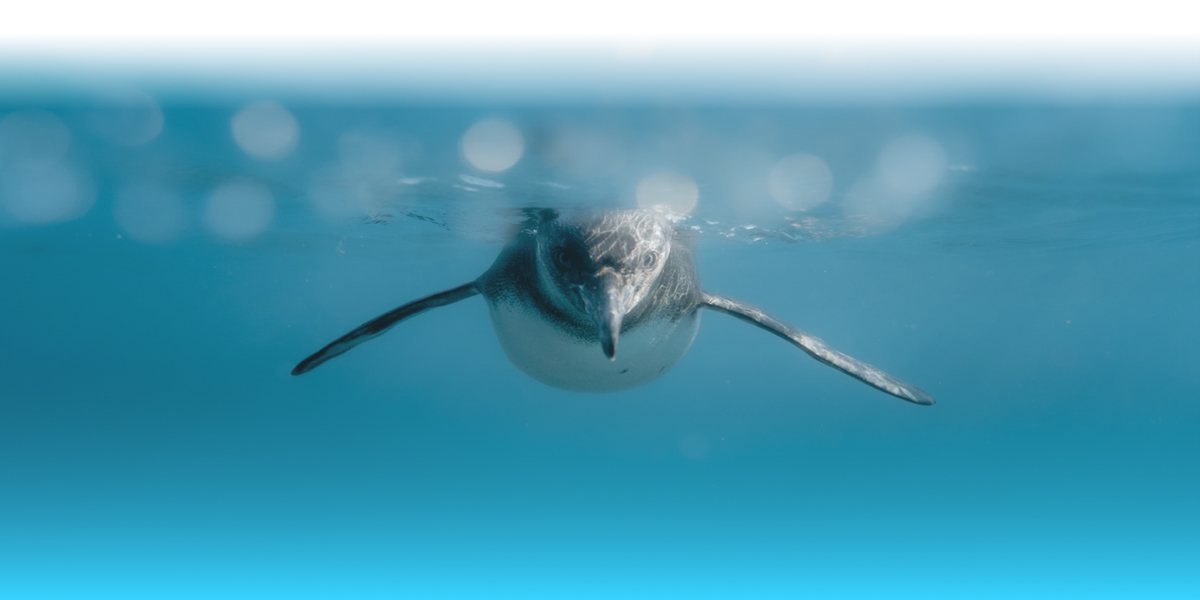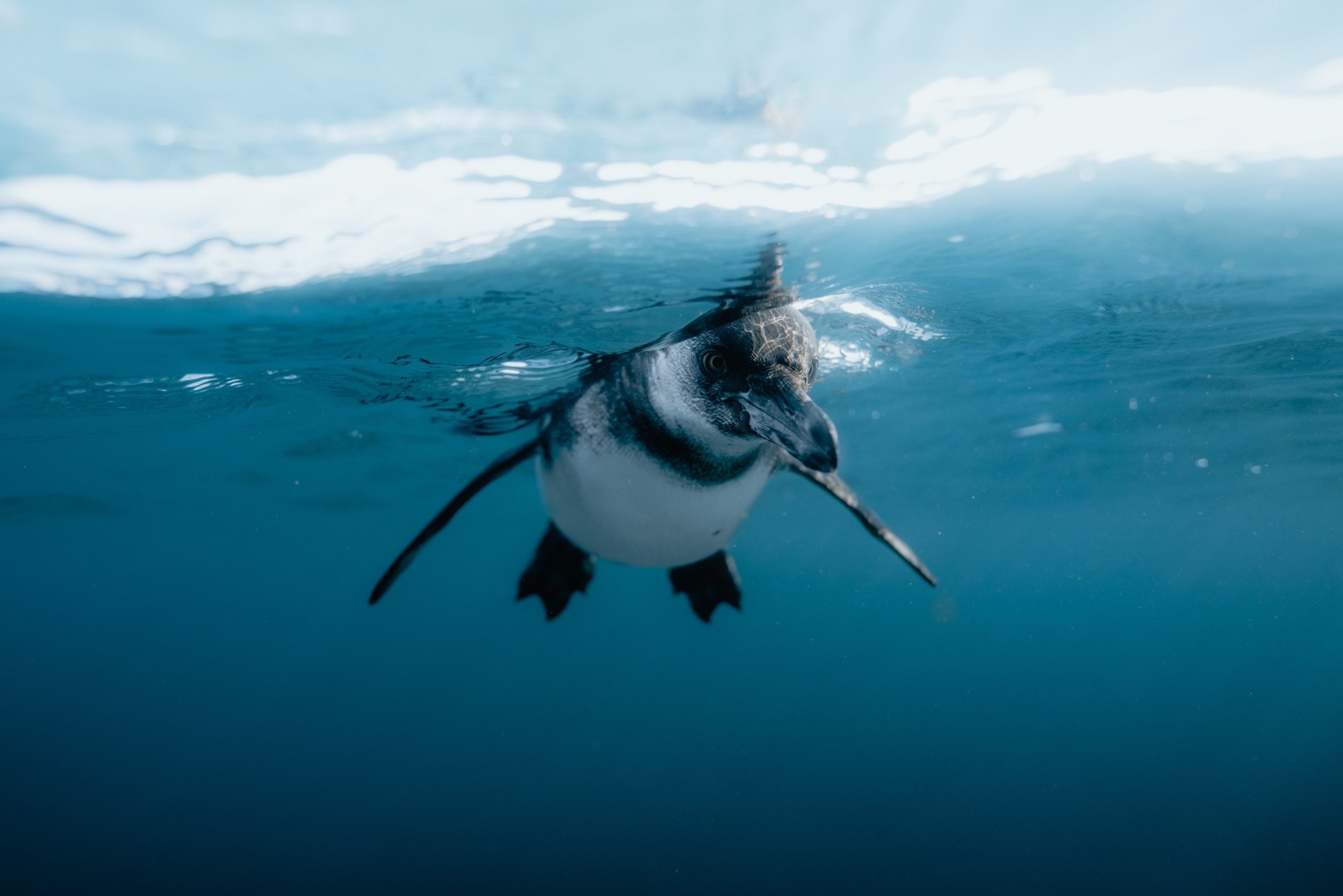
Very docile and gentle, Galapagos penguins are unique. They are not only one of the smallest penguin species in the world, but also they are also the only penguin that lives in the equatorial line with a tropical climate. They feed near the coast and their diet is mainly composed of fish and crustaceans. They are excellent divers as they dive to find prey at deeper levels. They have been recorded feeding at 50 meters deep.
But all this diving fun may be coming to an end, because the heating of the ocean is forcing the penguins to swim further and further in search of food. And along these longer journeys they become prey of bigger predators lurking in the open waters.
This is happening due to global climate change and it is one of the main threats to the penguin’s survival.
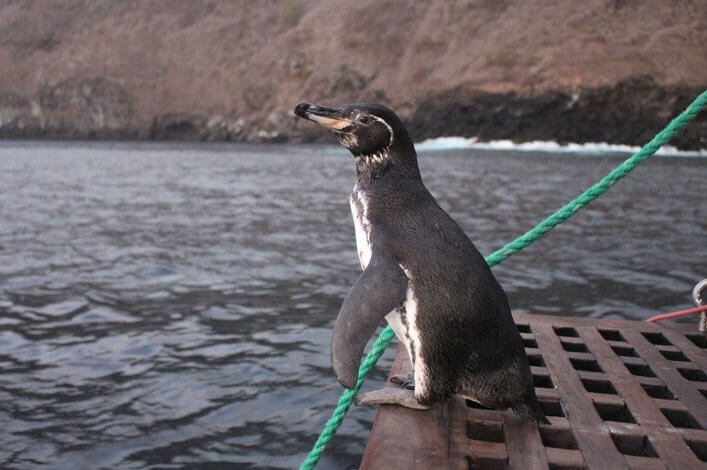
The future for the Galapagos penguin looks bleak
The International Union for the Conservation of Nature (IUCN) recently assessed the species as “Endangered” (close to extinction) ¹, because its population has been reduced to one of the smallest ever recorded.
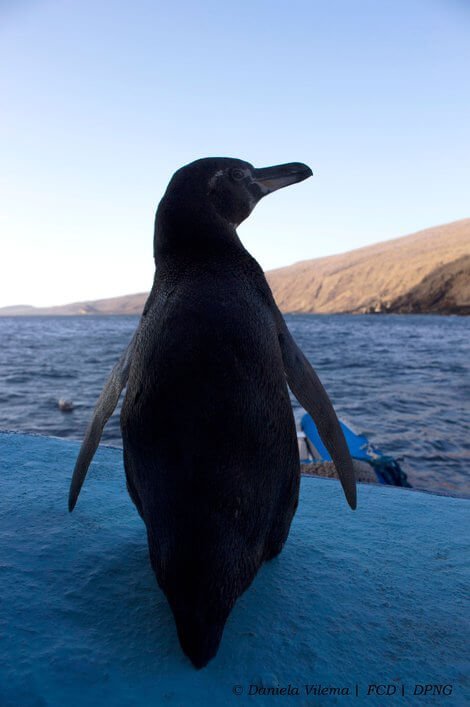
The Charles Darwin Foundation (CDF), a scientific research institution based on the Galapagos Islands, has contributed to catalogue other threats, such as “introduced species preying eggs and chicks. The list of introduced predators includes cats, rats and others. Pathogens and diseases carried by mosquitos and flies are also a concern.
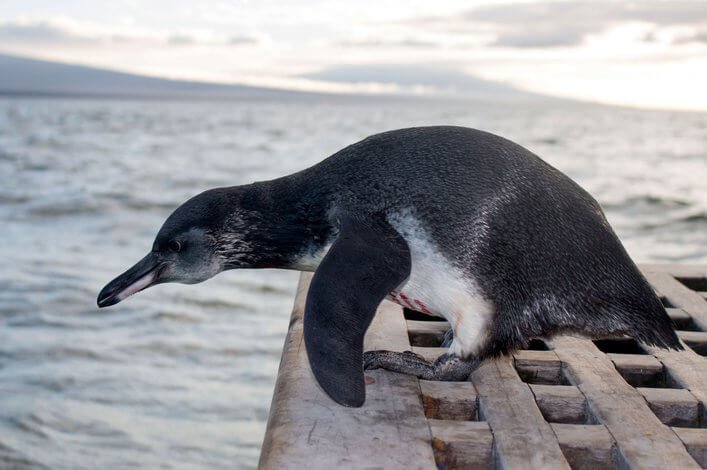
Besides these existential threats, penguins are not prolific breeders; they typically lay 2 to 3 eggs that hatch after 35 to 42 days, and it depends of the quantity of the food.
There is a silver lining to our penguin story. Since 2010, Charles Darwin Foundation together with Galapagos National Park Directorate has been monitoring and cataloguing individuals and nests, to obtain information such as survival, reproduction, threats, among others.
The leader of this project, Gustavo Jimenez-Uzcátegui mentioned that improved observation records and data sets are the baseline to develop a long term management plan to guarantee the survival of the Galapagos penguin.
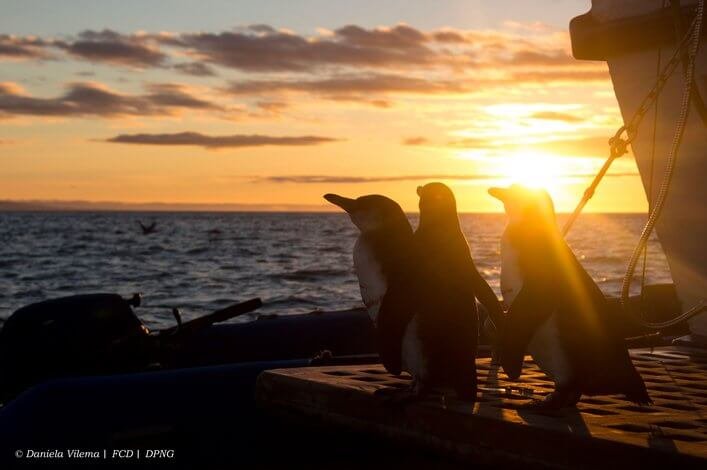
You can also help! Please donate today.
- International Union for Conservation of Nature, Red List of Threatened Species, accessed March 14, 2014, http://www.iucnredlist.org. IUCN Red List information for specific penguin species can be obtained by entering the scientific name in the search field "Enter Red List search term(s)."


